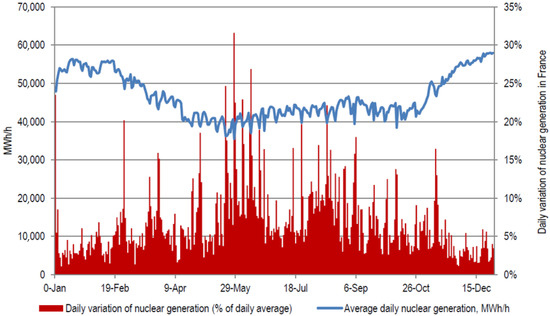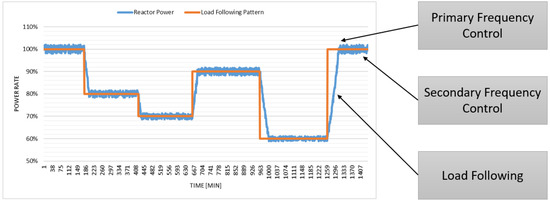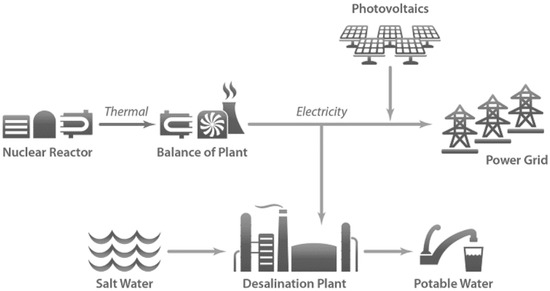1. Introduction
The transportation industry is witnessing a notable trend toward adopting electric vehicles (EVs). The International Energy Agency (IEA) reported that in 2020, the number of EVs in use globally exceeded 10 million, marking a 41% increase from the previous year, and EV sales reached a record 3.1 million, despite the impact of the COVID-19 pandemic
[1]. The growth of the EV market is projected to continue in the coming years, driven by government policies, technological advancements, and consumer demand for ecofriendly transportation. The IEA predicts that by 2030, the number of EVs on the road will be between 140 million and 245 million, depending on the level of government support and climate goals
[1]. As EV adoption increases, the demand for electricity to power these vehicles is also increasing rapidly, with EVs consuming approximately 20 billion kWh of electricity worldwide in 2020. The IEA estimates that by 2030, EVs could consume up to 280 billion kWh of electricity annually, equivalent to countries such as Indonesia and the Netherlands. Although the shift towards electric vehicles (EVs) can enhance air quality and decrease greenhouse gas emissions, it also introduces novel obstacles for the electricity domain, such as coping with the surge in electricity demand and constructing enough charging stations to cater to the expanding number of EVs on the streets
[2].
As electric vehicle (EV) adoption grows, significant challenges arise for the energy grid, particularly concerning charging stations. Firstly, the energy grid must be able to manage the increased demand for electricity to power the charging stations, leading to grid congestion and increased energy prices, particularly during peak charging periods. Secondly, renewable energy sources intermittently (such as solar and wind) can create challenges for charging stations that rely on these sources for power. Thirdly, the location of charging stations can also pose challenges for the energy grid, as they may require significant upgrades to the local distribution network to support increased power demand. Finally, there is a need for charging technology and infrastructure standardization to ensure interoperability and ease of use for EV drivers
[3]. Addressing these challenges will be critical in enabling the widespread adoption of EVs and the development of a sustainable, low-emission transportation system
[4].
Predicting the energy consumption of electric vehicle (EV) charging stations is crucial for planning and managing the charging infrastructure and optimizing the use of energy resources. Various techniques have been proposed to predict the energy consumption of EV charging stations, which can be broadly categorized into model-based and data-driven approaches
[5].
Model-based approaches involve developing mathematical models that describe the charging process and the energy consumption of EVs. These models take into account various factors, such as the battery characteristics of the EV, the charging station’s power output, and the charging protocol used. Model-based approaches can provide accurate energy consumption predictions but require a significant amount of data and computational resources
[6].
Data-driven approaches, on the other hand, use machine learning algorithms to analyze historical charging data and predict future energy consumption. These approaches are data-driven, which means that they do not rely on prior knowledge about the charging process. Data-driven techniques can be less accurate than model-based approaches, but they are easier to implement and require fewer computational resources
[7].
Several studies have investigated different techniques for predicting the energy consumption of EV charging stations. For example, some studies have proposed using artificial neural networks (ANNs) to predict the energy consumption of EV charging stations based on historical charging data. Other studies have explored the use of clustering techniques to group EV charging sessions based on charging behavior and predict future energy consumption based on these clusters. Overall, predicting the energy consumption of EV charging stations is an important research area with numerous challenges and opportunities for improvement. By accurately predicting energy consumption, charging infrastructure can be better planned and managed, leading to a more efficient and sustainable transportation system
[8][9].
Climate change is one of the significant global challenges that the world community is facing. Due to the threat of global warming, there are public health risks arising from poor air quality and harmful fine particles. Nuclear and renewable energy sources, which were previously considered separate, may now have found common ground and can work together to address these challenges. Recent technological advancements now allow nuclear power, which has traditionally provided baseload power, to provide load-following flexibility, making it an ideal partner for renewable energy. This can help to manage the uncertainty and unpredictability associated with renewables. Additionally, the progress in the small modular reactor (SMR) technology means that it can be deployed to remote areas, further facilitating the integration of the two energy resources
[10].
Nuclear-renewable hybrid energy systems are increasingly being recognized as a promising solution to meet the world’s increasing energy demands while reducing greenhouse gas emissions. According to the International Atomic Energy Agency (IAEA), in 2020, nuclear power plants generated approximately 10% of the world’s electricity, while renewable energy sources (excluding hydro) generated 10.3%. By combining these two sources, hybrid energy systems can provide a stable and reliable source of energy, reduce carbon emissions, and increase the overall efficiency of the energy system
[11].
One of the benefits of nuclear-renewable hybrid energy systems is their ability to provide continuous power while adapting to fluctuating demand. Nuclear power provides a stable and reliable source of baseload power, while renewable energy sources such as solar and wind can provide variable power based on environmental conditions. By combining these sources, hybrid systems can provide a stable source of energy that adapts to the changing energy demands. Another advantage of hybrid energy systems is their ability to reduce greenhouse gas emissions. According to a study by the Massachusetts Institute of Technology (MIT), hybrid systems that combine nuclear and renewable energy sources can reduce carbon emissions by up to 90% compared to fossil fuel-based systems
[12]. By reducing carbon emissions, hybrid energy systems can help mitigate the impacts of climate change.
In addition, an N-RHES can provide surplus energy that can be used to produce hydrogen as a storage system and charge fuel cell vehicles. Hydrogen is a flexible energy carrier that can be used to power electric vehicles, heat houses, and produce electricity. According to the International Energy Agency (IEA), hydrogen has the potential to account for up to 18% of the world’s final energy consumption by 2050. In addition, hydrogen fuel cell vehicles (FCVs) are becoming increasingly popular, with FCV sales reaching over 10,000 units in 2020
[13][14].
In an N-RHES, the surplus energy generated by nuclear and renewable energy sources is used to power an electrolyzer, which produces hydrogen from water. The hydrogen is then stored in a tank and can be used to power fuel cell vehicles or be converted back into electricity via a fuel cell. This approach can help to integrate intermittent renewable energy sources into the energy system while providing a clean and sustainable energy carrier
[15]. Several countries, including Japan, Germany, and the United States, have invested in developing hydrogen fuel cell vehicles and infrastructure. The Japanese government has set a target of having 800,000 FCVs on the road by 2030, and Germany has announced plans to invest over 9 billion euros in hydrogen technology by 2023. In the United States, the Department of Energy has set a target of reducing the cost of hydrogen production to USD 2 per kilogram by 2028, making hydrogen competitive with gasoline on a cost-per-mile basis
[16]. By using surplus energy from an N-RHES to produce hydrogen, countries can further promote the use of hydrogen fuel cell vehicles and reduce their dependence on fossil fuels.
Overall, the power system is evolving into a larger, more complex, and integrated system that is closely linked with transportation and other energy systems. This evolution has a significant impact on the reliability and operation of power systems, as well as the competitiveness of nuclear plants and the tools used for planning power systems analysis.
2. EV Charging Infrastructure
Electric vehicle charging stations are infrastructure providing power to vehicles to charge their batteries. Two types of energy networks exist: direct current (DC) and alternating current (AC). The primary distinction between these two systems is that, in an AC system, the vehicle’s onboard charger typically uses a converter to charge the battery, as shown in
Figure 1. Conversely, a DC charger directly charges the battery of the vehicle, as shown in
Figure 2.
[17].
Figure 1. AC Charging Station.
Figure 2. DC Charging Station.
A charging station is also categorized into levels, as shown in
Table 1. A Level 1 charger typically employs 120 VAC/230 VAC power sources that draw current within a range of 12 A to 16 A. It can take around 12 to 17 h to fully charge a 24-kWh battery, and L1 chargers can provide a maximum power of 2 kW, suitable for residential applications. On the other hand, a Level 2 charger uses poly-phase 240 VAC sources to power a more robust vehicle charger, and the current drawn can range between 15 A and 80 A. These chargers can fully charge a 24-kWh battery in approximately 8 h, providing a power level of up to 20 kW
[18].
Table 1. Details of the charging stations classified based on power level.
The DC charging station, also called the Level 3 charger, has a high-power output range of 120 to 240 kW and can typically recharge batteries up to 80% State of Charge (SOC) in less than 30 min. To achieve this fast charging, modular converters that can be stacked are used. However, if these converters are placed inside the vehicle, it increases its size and weight. The converters are installed outside the vehicle to avoid this issue, forming the EV charging station. The charging station bypasses the onboard charger by connecting directly to the vehicle’s battery
[18][19].
3. The Nuclear Reactor as a Load-Following Source
For many years, nuclear reactors have primarily been used as baseload energy sources, providing a reliable and steady supply of electricity to the grid. This is because traditional nuclear reactors are designed to operate at a constant power output, and changing their power output can be challenging
[20].
However, with the increasing use of renewable energy sources, such as solar and wind, which are often intermittent in nature, there is a growing need for flexible and adaptable energy sources that can adjust their power output to match changes in electricity demand. As a result, some nuclear reactors are now being designed with load-following capabilities in mind
[21]. Moreover, that is the case in France, where more than 75% of electricity is generated from NPPs, and the rest comes from hydropower plants, coal, gas, and fuel oil plants due to this high share of nuclear power.
Figure 3 presents the history of the total nuclear generation in France during 2010, where the average daily variation is about 6.7%. However, for some periods, the daily variation reached over 20%
[22][23].
Figure 3. Average Daily NPP Generation and Daily Variation in France in 2010.
The deployment of renewable energy systems has seen a significant increase due to advancements in sustainable energy systems. However, the intermittence of renewable sources, particularly solar and wind, presents challenges. The development of load-following capabilities in nuclear power plants has become increasingly important as more renewable and nuclear energy sources are integrated into the same electricity grid
[21].
Nuclear power plants must be able to operate in a load-following mode to stabilize power generation fluctuations. This can be accomplished through different methods, such as controlling rod movements, adjusting boric acid concentration, or using a recirculation system. However, selecting the appropriate method depends on the design technology and power variation required
[24].
While load following is technically feasible in most nuclear reactors, it may not be economically viable due to several physical effects of power generation and regulations that limit power variations, such as the moderator effect, doppler effect, fission product poisoning, and fuel burnup. Therefore, load following requires higher control technologies for reactors than during the baseload operation
[25]. Currently, nuclear power plants operate in four modes: baseload generation mode, which is the most common mode and involves operating the reactor at constant power for most of the fuel cycle, and three methods for power regulation, namely primary frequency control, secondary frequency control, and load following
[26], exemplified in
Figure 4.
Figure 4. Power Regulation Modes in NPPs.
As nonconventional energy grids like hybrid microgrids become more prevalent, accurately predicting power demand variations becomes more difficult. This unpredictability can result in frequency fluctuations, making it essential for Nuclear Power Plants (NPPs) to constantly monitor grid frequency and adjust their generation levels accordingly to maintain stability
[23].
Primary frequency control involves short-term adjustments to electricity production and demand in response to observed deviations in frequency. Secondary frequency control operates over longer timeframes, from seconds to several minutes, and restores precise frequency levels by calculating average frequency deviations over a period
[26].
Load following is a power regulation system that enables the plant to follow a variable load power trajectory, programmed to change over time. The energy grid operators set the LF pattern based on power demand and the plant’s maneuvering capabilities. The reactor core load following control is schematically shown in
Figure 5. The control system drives the actuator, such as control rods or boron adjustments, to make the output power trajectories of the reactor core follow the reference power trajectories in real time while ensuring that the output axial power difference stays within a required target band
[24].
Figure 5. Schematic of Reactor Core Load-Following Control.
The load-following operation is crucial for NPPs to stabilize total power generation fluctuations, mainly when there is a significant share of nuclear and renewable energy sources on the same electricity grid. While LF is technically possible in most nuclear reactors, it may not always be economically desirable due to the significant physical effects of power generation and regulatory limitations. However, LF still requires higher control technologies for reactors than during baseload operations
[25].
Achieving reliable control of core power and the axial power difference is crucial for secure and economical operations of large reactors, such as PWRs, during load following. This operation involves significant load maneuvers on grids and multivariable regulations, which require advanced control technologies for reactors compared to traditional baseload operations.
4. Nuclear-Renewable Hybrid Energy System
A nuclear-renewable hybrid energy system is a type of energy system that combines the benefits of nuclear and renewable energy sources to provide a reliable, sustainable, and cost-effective source of electricity. This type of energy system utilizes both nuclear power plants (NPPs) and renewable energy sources, such as solar, wind, or hydroelectric power, to complement each other and provide a consistent and stable source of energy.
Figure 6 exemplifies the benefits of integrating novel systems for maximizing energy
[27].
Figure 6. Schematic of Nuclear-Renewable Hybrid Energy System.
The primary advantage of a nuclear-renewable hybrid energy system is that it can leverage the benefits of both nuclear and renewable energy sources to provide a sustainable and reliable source of electricity. Nuclear power plants are known for their high reliability, low carbon emissions, and ability to provide baseload power, while renewable energy sources are known for their low carbon emissions, scalability, and ability to generate power from abundant natural resources
[28].
By combining these two types of energy sources, a nuclear-renewable hybrid energy system can provide a stable and consistent source of electricity, even during periods of high demand or fluctuating weather conditions. Additionally, this type of energy system can reduce the overall carbon emissions associated with electricity generation, which is crucial in the fight against climate change
[29][30].
Overall, a nuclear-renewable hybrid energy system has the potential to provide a sustainable and reliable source of electricity for the future, making it a critical component of global energy transition.











